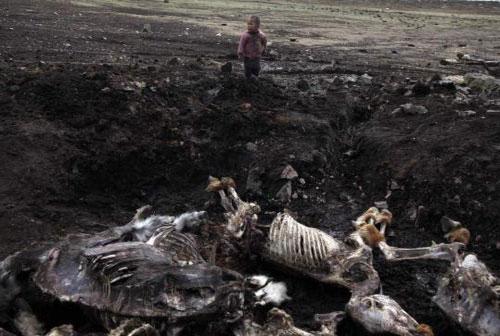Энэ 7 хоногт
Mongolia seeks stability and long term economic growth
Mongolia rests on billions of dollars’ worth of copper, gold, uranium and coal reserves, in such vast quantities that the country and its population are predicted a great influx of wealth in the near future.

Mongolia rests on billions of dollars’ worth of copper, gold, uranium and coal reserves, in such vast quantities that the country and its population are predicted a great influx of wealth in the near future. But if the country’s profusion of raw minerals guaranties to generate large profit in the near future, it offers no guarantee to benefit the landlocked nation on the long term.
Mongolia’s prosperity currently relying mainly on its export of primary resources, its economy is exposed to volatile commodity price cycle which can have severe repercussion. Another risk for the country would be the appreciation of its currency which would make its exports less competitive; though Mongolia is mainly exporting raw material, it would nevertheless have an impact on the nation’s economy. According to Standard & Poor's credit analyst Agost Benard, the rating actions reflects the risks that Mongolia's fiscal and debt credit metrics could see substantial deterioration in the event that the recent steep fall in the price of copper --the country's main source of fiscal revenue and export receipts-- is not countered by prompt corrective fiscal measures.
Nevertheless, Mongolia’s future wealth which will result from major developments of projects such as Oyu Tolgoi copper and gold mine (expected to produce USD30 billion in revenue), and USD2 billion Tavan Tolgoi coking coal, is expected to contribute to a significant raise of the country’s Gross Domestic Product. Mongolia GDP had reached USD5.3 billion in 2008 according to the World Bank (it was USD1.1billion in 1997). But many countries’ GDP did not improve despite the exploitation of vast natural resources as the majority of their population never profited from the revenues generated. The Mongolian Government must ensure the profits resulting from the exploitation of its resources are invested in the long term development of the country’s economy by improving its industry, infrastructure, and its social services, by creating more jobs, and by applying transparency to its finances to avoid embezzlement.
As such, Mongolia is currently working with the World Bank to harness its natural resources and help drive its economic growth. The government is also leveraging its democratic system to build support for policies including greater investment in transportation, and a new budget law aimed at curbing the impact of volatile metals prices. Mongolia’s Government has proposed a law based on a Chilean measure that would save surplus revenue from mineral royalties when prices are high to stabilize the budget when they fall; and in 2009, it set up a Human Development Fund modelled on an Alaskan program that distributes some royalties to citizens. The country is also developing its social welfare system to benefit only the poor and plans to improve roads and railroads to access new mines and help herders to transport their cattle to market.
In addition, the Government places big hopes on its young democracy to help smooth the adjustment to new wealth. Mongolians freely criticize their Government, as evidenced last week at a Mongolian Economic Forum where activists, journalists and Parliament members complained that officials were not doing enough to alleviate poverty and unemployment, and reduce the country income gap. An example of the Government’s transparency policies is its pushing to make mining contracts available on its Web site to spur public participation and debate.






